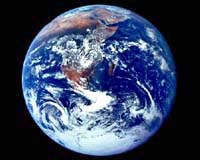
 |
Soldiers using boats and helicopters plucked some 50,000 people to safety after waters up to 10 feet (three metres) deep submerged roads and flooded dwellings in southern Gujarat state, worst hit by the rains.
"This is the worst flooding since 1998," said Gujarat Home Secretary K. Nityanandam as swollen rivers spilled their banks and drenching rains turned some villages into lakes.
At least 1,600 people have died in India, Bangladesh and Nepal in flooding that has submerged parts of the region since July 10, according to an AFP tally based on official figures. Media reports say the final toll may be far greater.
Weather forecasters said more heavy precipitation was on its way in the region which had been facing drought, threatening economic growth in the agriculture-dependent country of more than one billion.
The western state of Gujarat has been hard hit.
"The death toll for this monsoon season which began around two weeks ago has hit 151," in Gujarat, said an official of the state flood control room, adding flooding from the monsoon which usually arrives in June only became serious in recent days.
In India, the countrywide toll now totals at least 849 while the figure rose to 628 in Bangladesh, although the country's official BSS news agency said unconfirmed reports put the toll at 800. Nepal has said at least 123 people have died in floods and landslides across the country.
The army and air force were called into airlift people in low-lying areas in at least three villages of southern Gujarat.
"The army and the air force have rescued 50,000 people over the last 48 hours" in the city of Surat and other parts of southern Gujarat, state relief commissioner V.A. Sathe said.
The people were being housed in community halls and schools and soldiers and aircraft were "distributing food packets" to inaccessible areas. he said.
Rains caused transport chaos in Gujarat and in neighbouring Maharashtra state, home to India's financial hub, Bombay, forcing cancellation of trains and flights and inundating streets.
A Bombay school girl drowned in an open sewer and workers waded through knee-deep waters to reach their offices. Traffic halted on the New Delhi to Bombay highway which travels through Gujarat as landslides blocked the route.
Rains also created havoc in the northern bread-basket state of Punjab, flooding roads and houses. A flood alert was sounded in parts of adjacent Haryana state and troops were dispatched to help in flood-hit areas.
In neighbouring Bangladesh, relief workers from the World Health Organisation and other bodies forecast a "severe" health situation, "likely to claim the lives of thousands unless urgent precautions were taken," the official news agency BSS said.
At their height, the floods swamped two-thirds of the low-lying nation and left some 30 million people marooned or homeless in the country of 132 million.
The government has estimated the flooding has caused damage totalling 6.6 billion dollars to property, crops and infrastructure.
Relief workers have been scrambling to deliver medical supplies, food and water purification tablets to marooned villagers.
An international appeal has been launched for more than 16 million dollars.
But many flood victims have had scant help and are suffering from diarrhoea and skin diseases. Thousands more are facing pitiful conditions in camps.
UNICEF has said it is alarmed at the exceptionally high number of flood victims with pneumonia and other acute respiratory infections, one of the biggest killers of children in Bangladesh.
TERRA.WIRE |